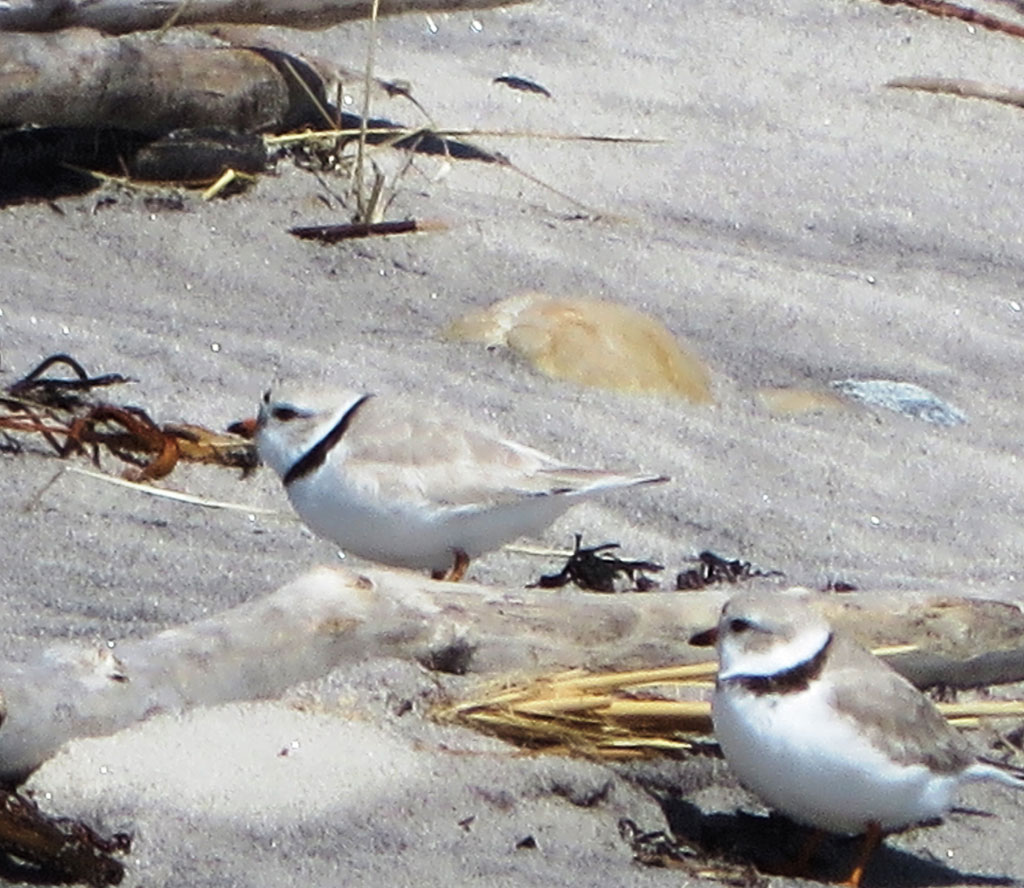
For the first time ever, I saw 8-10 piping plovers (adult and growing chicks) scurrying around “together” on Sanctuary of Sands.
Fishers Island’s piping plover chicks were born in two separate hatchings on Sanctuary of Sands and near the Race Point Parking area in late May.
In 2014 and 2015, I spotted only a single piping plover at the Big Club Beach and had documented none on the West End. How exciting to see “our” piping plover community expanding!
The New York Times recently reported that Fire Island’s piping plover population has nearly doubled since Hurricane Sandy struck in 2012. Sand and seawater washed over the island during the storm, and the combination of new sand flats and coastal repair increased plover habitat by 50 percent. (Piping plovers like to nest on dry flat sand close to the shoreline.)
From the Field, Field Note Justine Kibbe June 26, 2019
Pearls of Wisdom*
Field Notes, From the FieldLike Mother nature’s necklace…
Gossamer strands of translucent dew droplets sway in delicate fog.
Transfer Station, Fishers Island
*Please recycle….
From the Field, Field Note by Justine Kibbe, July 5, 2019
Mourning’s Light
NewsMourning Dove is wide awake within this early morning’s light.
Please Pay Landing Fee
Field Notes, From the FieldLeast Terns Flying on Upswing
Field Notes, From the FieldGone Fishing
NewsLong Island Sound is home to over 100 species of fish. July days bring recreational fishing off Fishers Island’s South beach, hoping to reel in summer flounder, striped bass and bluefish.
FIConservancy works with New York and Connecticut to conserve some 400 acres of precious Eelgrass meadows that provide vital “nursery” habitat for fish, as well as foraging for sea birds, shore birds and marine mammals.
Observation and photo by FIConservancy Naturalist Justine Kibbe
Stewardship: You’re So Special
Field Notes, From the FieldMaking Way for Eider Ducklings
Field Notes, From the FieldHanging Out to Dry
Field Notes, From the FieldThese very still and hazy early mornings of summer are just the thing for deep diving double-crested cormorants. Waterlogged feathers actually help these birds dive deeper for fish, while low tide’s rock clumps assist with their “drip-dry”.
Southside, Fishers Island
From the Field, Field Note Justine Kibbe, June 29, 2019
A Pocketful of Plovers
Field Notes, From the Field, NewsFor the first time ever, I saw 8-10 piping plovers (adult and growing chicks) scurrying around “together” on Sanctuary of Sands.
Fishers Island’s piping plover chicks were born in two separate hatchings on Sanctuary of Sands and near the Race Point Parking area in late May.
In 2014 and 2015, I spotted only a single piping plover at the Big Club Beach and had documented none on the West End. How exciting to see “our” piping plover community expanding!
The New York Times recently reported that Fire Island’s piping plover population has nearly doubled since Hurricane Sandy struck in 2012. Sand and seawater washed over the island during the storm, and the combination of new sand flats and coastal repair increased plover habitat by 50 percent. (Piping plovers like to nest on dry flat sand close to the shoreline.)
From the Field, Field Note Justine Kibbe June 26, 2019
Indigo Blue
Field Notes, From the FieldAn Indigo Bunting and a White Throated Sparrow pause in their preferred habitat: thickets and bushy wood edges.
Indigo Buntings, abundant songbirds, are sometimes nicknamed “blue canaries”, but are part of the cardinal family. This migratory bird ranges from southern Canada to northern Florida during the breeding season, and from southern Florida to northern South America during the winter.
The White Throated Sparrow is one of the continent’s best-studied and most familiar songbirds. It is found at some season throughout much of North America, south of the tree line and principally east of the Rocky Mountains.
From the Field, Field Note Justine Kibbe June 26, 2019